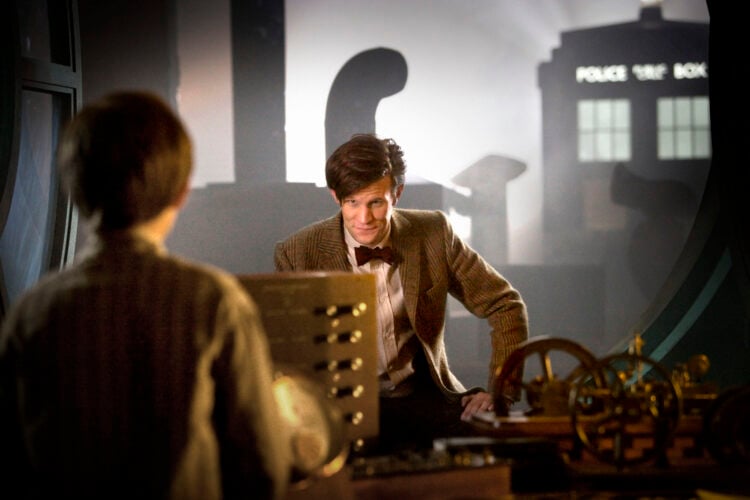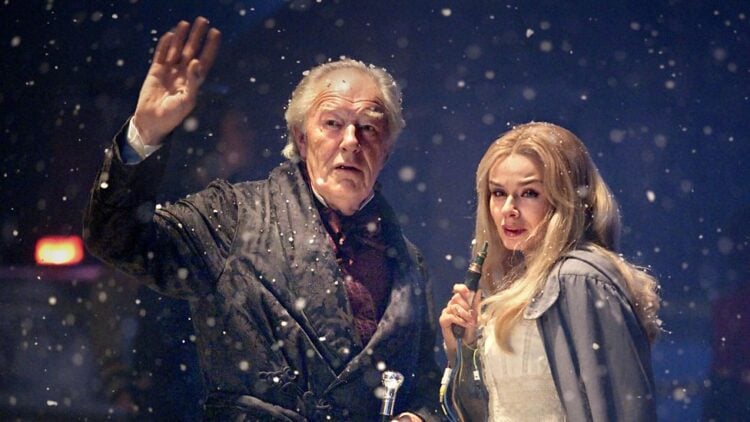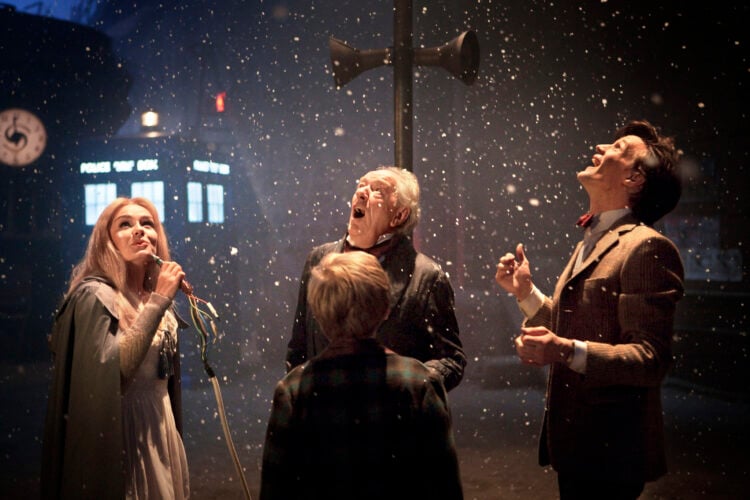Doctor Who has become a staple of British television since its revival in 2005 with 13 incarnations of the Time Lord and countless companions, the series has captured the imaginations of fans across the globe. Every year, fans eagerly anticipate the Doctor Who Christmas special, which features a unique storyline set during the festive season. Among the many Christmas specials produced by the franchise, A Christmas Carol stands out as a particularly special and significant episode.
First broadcast on Christmas Day in 2010, Doctor Who‘s A Christmas Carol Episode marked the first Christmas special under showrunner Steven Moffat‘s tenure. The episode reimagines the classic Charles Dickens tale, transporting the Doctor (Matt Smith) to the planet of Sardicktown, where he must use time-traveling technology to alter the past of an old miser named Kazran Sardick (Michael Gambon). Here is why A Christmas Carol is not only a delightful festive episode but also an essential part of the Doctor Who franchise.
A Christmas Carol was Matt Smith’s First Christmas Special
A Christmas Carol was Matt Smith’s first Christmas special, and it remains one of the most memorable episodes of his tenure as the Doctor on Doctor Who. The episode, which aired in 2010, saw the Doctor traveling to the planet of Sardicktown, where the miserly Kazran Sardick, (Michael Gambon), had control over the planet’s weather. In order to save a crashing spaceship full of innocent people, the Doctor had to convince Kazran to release the cloud layer and let the ship through.
Along the way, he met a young woman named Abigail, who had been frozen in time by Kazran’s father and fell in love with her. The episode showcased Smith’s ability to balance the Doctor’s quirky humor and manic energy with moments of profound emotion and tenderness. His interactions with Gambon’s Kazran were particularly noteworthy, as the two actors played off each other brilliantly.
The Use of Time Travel as a Plot Device in A Christmas Carol

The use of time travel has always been a central element of Doctor Who, and this episode sees the Doctor using his time-traveling abilities to try and change Kazran Sardick’s past in order to influence his present and save the people on the crashing spaceship. However, as the Doctor learns, meddling with someone’s past can have unforeseen and dangerous consequences. The episode deftly explores the idea of the ripple effect and the responsibility that comes with time travel, making it a standout example of how Doctor Who uses time travel as a plot device to tell compelling stories.
The episode also uses time travel to explore themes of regret and redemption. Through his interactions with Kazran and his attempts to change the man’s past, the Doctor forces Kazran to confront the pain and suffering he has caused others, including his own family. As the episode progresses, Kazran begins to realize the error of his ways and attempts to make amends, ultimately leading to a heartwarming conclusion that emphasizes the power of forgiveness and the possibility of redemption. A Christmas Carol demonstrates how Doctor Who can use time travel not just for action and adventure, but also for thought-provoking explorations of complex ideas and emotions.
The Episode’s Exploration of Redemption and Second Chances

Doctor Who‘s A Christmas Carol Episode is a crucial addition to the franchise because of its deep exploration of redemption and second chances. The episode takes inspiration from the classic Charles Dickens novel and presents a story that emphasizes the power of forgiveness and compassion. The episode centers around a bitter and cold-hearted man named Kazran Sardick, who has the ability to control the clouds and the weather.
The Doctor visits Kazran on Christmas Eve and tries to convince him to change his ways and use his power to help others. Through a series of time-traveling adventures, the Doctor takes Kazran on a journey through his past, present, and future, showing him the consequences of his actions and the impact they have had on those around him. The episode ultimately demonstrates that no matter how far gone someone may seem, there is always a chance for redemption and for them to make things right. It is a powerful message that resonates with viewers and speaks to the core values of the Doctor Who franchise.

